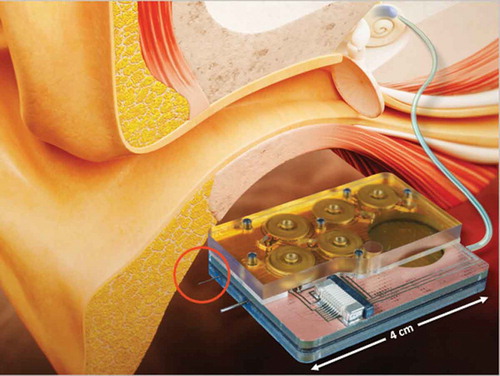Figures & data
Figure 1. Flow diagram illustrating the various classes of SensoriNeural Hearing Loss (SNHL) and the current Standard of Care (SoC) for each mode. For cisplatin chemotherapy, for instance, approximately 50% of patients suffer permanent hearing loss [Citation4], while over 10% of the US population suffers from NIHL [Citation7], and the NIDCD notes that 1/3 of adults 65 to 74 years of age suffers from significant hearing loss.
![Figure 1. Flow diagram illustrating the various classes of SensoriNeural Hearing Loss (SNHL) and the current Standard of Care (SoC) for each mode. For cisplatin chemotherapy, for instance, approximately 50% of patients suffer permanent hearing loss [Citation4], while over 10% of the US population suffers from NIHL [Citation7], and the NIDCD notes that 1/3 of adults 65 to 74 years of age suffers from significant hearing loss.](/cms/asset/fdb38f2e-e414-47b7-bd2f-4dbe5e25a8f9/iedd_a_1444026_f0001_b.gif)
Table 1. Selected therapeutic compounds are organized by delivery method, class of action, disease target, and stage of development.
Table 2. The effects of drugs on the inner ear depend in large part on the pharmacokinetics of the drug within the fluids of the inner ear, specifically what drug concentrations reach different regions of the ear and how long the drug stays in each region before disappearing.
Figure 2. Schematic of the delivery chip component of an intracochlear drug delivery (ICDD) device comprising microfluidic drug storage and flow control. The ICDD device is connected, via a small tube inserted into the scala tympani, to the basal turn of the human cochlea to show potential clinical implementation.

